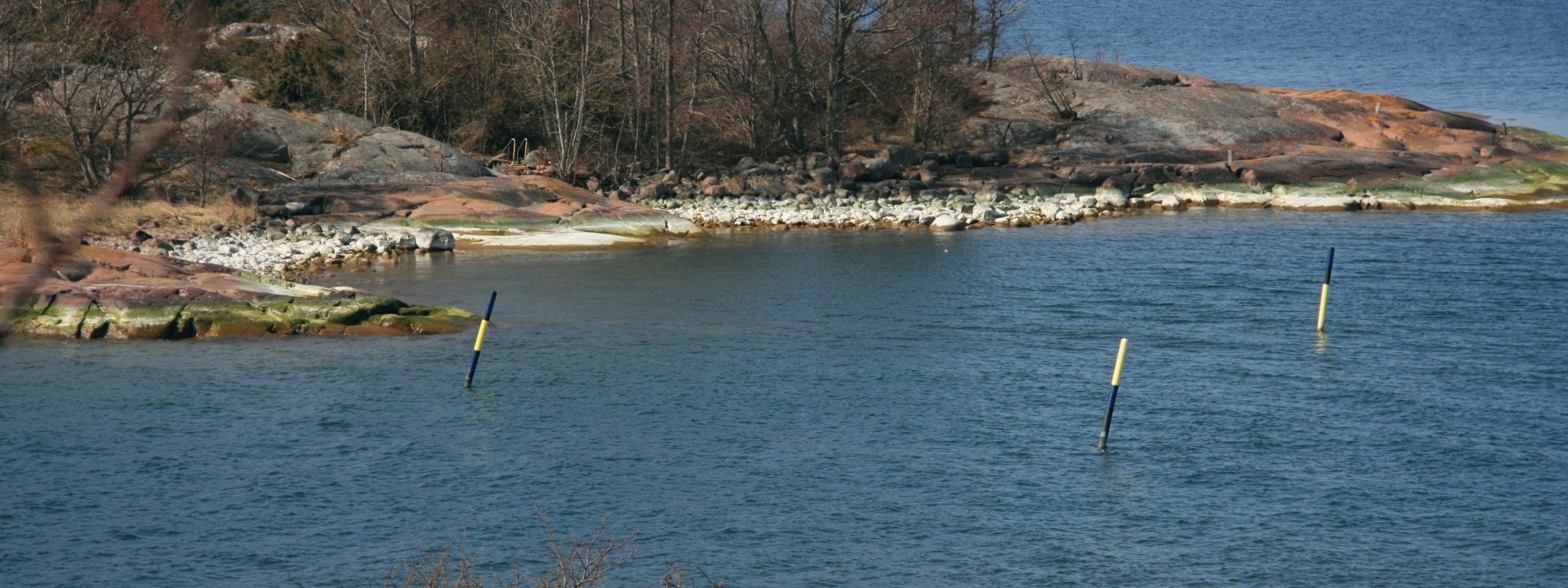Spatio-temporal dynamics of coastal water properties
Coasts are characteristically heterogeneous hydrological systems, where river runoff and pelagic water mix. We have studied the wide coastal archipelago of SW Finland to understand the complex patterns of horizontal and vertical mixing, and the dynamics of river-borne water and substance dispersion through the coastal area. Many processes that affect the water undergo seasonal development cycles, but the Baltic Sea coasts are also influenced by irregular flow events driven by weather variability.
Research examples
Suominen, T., H. Tolvanen & R. Kalliola (2010). Surface layer salinity gradients and flow patterns in the archipelago coast of SW Finland, northern Baltic Sea. Marine Environmental Research, 69(4), pp. 216–226.
Abstract:
The highly fragmented Archipelago Sea in the northern Baltic Sea forms part of a sill area between two large sea basins. In addition to the water exchange between the basins, its waters are influenced by runoff, and thus the sea area has both sill and estuarine characteristics. We studied surface layer salinity gradients and their applicability in defining water exchange patterns through and within the region. A broad scale salinity pattern was detected during two sequential years. The spreading of fresh water in the spring was succeeded by a gradual increase in salinity during the summer. Long term data revealed a non-seasonal salinity fluctuation and diminished salinity stratification in the central and northern parts of the study area. We concluded that temporally unrepresentative mean values of salinity alone are inadequate for the purposes of coastal management in this region. In addition, both the range of variation and persistence of the conditions define the character of the transitional and coastal waters.
Suominen, T., H. Tolvanen & R. Kalliola (2010). Geographical persistence of surface-layer water properties in the Archipelago Sea, SW Finland. Fennia 188(2), pp. 179–196.
Abstract:
The Archipelago Sea in the Northern Baltic Sea has a complex water quality regime. The region consists of islands and underwater thresholds that separate interconnected sub-basins, where the waters from the adjacent sea areas and discharges from the mainland are mixed. Thus, the water properties in the region are exceptionally varying by season and location. We studied the seasonal developments of five surface-layer water variables–temperature, salinity, Secchi depth, chlorophyll and acidity–and the persistence of their geographical patterns in a network of 20 sampling stations in the eastern part of the Archipelago Sea during a period from May to October in 2007. Furthermore, the inter-annual persistence of the late summer observations of three of these variables were analysed within the same network. Although preconceptions about the general gradation patterns from the mainland towards the open sea were found realistic, we also identified geographically divergent seasonal developments and found out that the inter-annual persistence of the studied three variables were not geographically as strong as expected.
